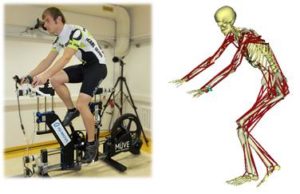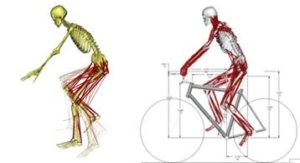User-centered design
Focusing on the user
The demographic change in industrial nations has not only got a huge impact on social and healthcare services. The ever changing needs of people in different phases of life also pose further challenges for product development.
 Therefore, user-centred design promotes product adaptation to the skills of future users. Age-sensitive products tailored to the users’ requirements and needs demand for new development processes and methods. For instance, it is essential to predict the impact of product use and behavior on human-specific product features. New virtual tools support product developers to ensure that user-product-interaction is designed and optimised effectively.
Therefore, user-centred design promotes product adaptation to the skills of future users. Age-sensitive products tailored to the users’ requirements and needs demand for new development processes and methods. For instance, it is essential to predict the impact of product use and behavior on human-specific product features. New virtual tools support product developers to ensure that user-product-interaction is designed and optimised effectively.
Research focus areas:
- acquiring and integrating individual user requirements in early stages of product development
- modelling and predicting user-productinteraction
- creating digital human models adapted to age and performance
- integrating human simulation with CAx
Design follows generations
In future, individual needs of users in different agesmust be carefully considered more than ever throughout the entire development process. Striving for this, user requirements are systematically identified and included in the early stages of the product development process. This leads to individually adapted, age-specific products which are better adjusted to the individual skills and needs of any user. This work is based on close interdisciplinary collaboration with psychologists, medical experts and specialists from other fields.
Predicting user behaviour
 User-oriented product features should be assessed based on the effectiveness and efficiency of the actions required from the user to achieve the product’s purpose. In the context of simulation with digital human models it is therefore necessary to predict the user behaviour required to achieve a given purpose depending on the product behaviour.
User-oriented product features should be assessed based on the effectiveness and efficiency of the actions required from the user to achieve the product’s purpose. In the context of simulation with digital human models it is therefore necessary to predict the user behaviour required to achieve a given purpose depending on the product behaviour.
Considering ergonomic aspects, a realistic synthesis of human motion and posture is required which can be achieved using advanced methods of inverse kinematics and optimal control to explore physiological factors. 
Biomechanical user modelling
Integration in CAD and CAE
Software solutions which can be integrated into existing CAD and CAE systems are beingdeveloped for effective use of biomechanical simulations in virtual product development. Assistant systems help the developer to design user-centred products by providing recommendations.
You can download this information in compressed form in a flyer here.